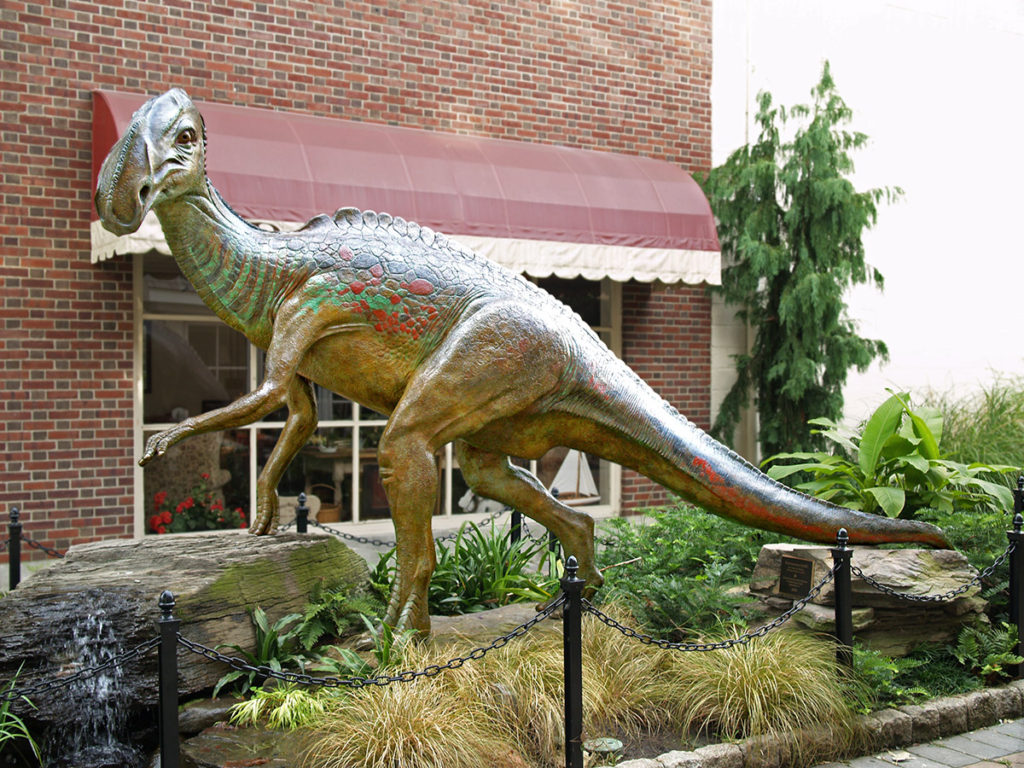
Our current world of dinosaurs — our media, our toys, our computer games, our food advertising, our natural history museums and a plethora of traveling mall and arena shows — traces its mother root to an 1858 discovery in Haddonfield, New Jersey. In 1868, that fossil — Hadrosaurus foulkii — became the first dinosaur skeleton ever mounted for public display anywhere in the world. That historic exhibit occurred in what is now the Academy of Natural Sciences of Drexel University in downtown Philadelphia.
This historic fact — that the small east coast town of Haddonfield is the site of one of the most important paleontological findings in the history of the science — isn’t very well known. Helping to change that is a bronze statue of the dinosaur created by local sculptor John Giannotti. The massive piece sits at the center of the borough’s commercial district.
Hadrosurus foulkii is, according to the Academy of Natural Sciences, “The Dinosaur that changed the world” because, among other things, its discovery set off the infamous “Bones Wars” that sent scientists Edward Drinker Cope and Othniel Charles Marsh scrambling across the continent to find and excavate what became an endless trove of dinosaur fossils. In the first 30 years after its discovery, Hadrosaurus foulkii was such an important scientific find that a replica of its fossil bones was mounted in the main atrium of the Smithsonian Institution; another replica was displayed at the 1876 Centennial Exposition that brought the world to Philadelphia.
Ultimately, the many finds of larger and more ferocious dinosaurs around the world came to overshadow the Haddonfield dinosaur but not its place in history as the first nearly-complete dinosaur skeleton — the find that proved dinosaurs were real and set off all the events that now feed our culture’s insatiable appetite for things dinosaur.
